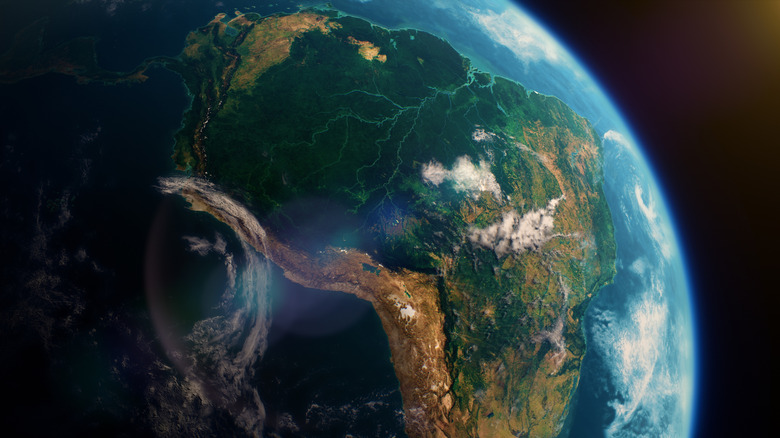Alarming Climate Data Found While Studying Tropical Forests
The habitats beneath tropical forest canopies contain some of the most biodiverse ecosystems found anywhere on the planet. According to the U.S. National Park Service, tropical rainforests are home to 50% of all plant and animal species worldwide. That staggering figure can be partly attributed to climate stability over many years and the unique ability of sub-canopy rainforest environments to maintain steady temperature conditions. Now, however, rapidly rising global temperatures and human land use are disrupting these biodiverse sanctuaries like never before.
Concerningly, new research findings have revealed a disturbing trend: Nearly two-thirds of the world's tropical forest areas most crucial to biodiversity are experiencing temperature patterns never before seen in their recent history.
The paper, published in Conservation Letters, claims that the areas beneath rainforest canopies where most species live — known as Key Biodiversity Areas (KBAs) — are facing a temperature crisis that threatens to unravel the ecosystems that thrive there. Because of this trend, the paper's authors argue, these areas should be at the center of any global conservation efforts going forward.
A crisis beneath the canopies
By analyzing characteristics of the rainforest — namely the temperatures beneath tropical rainforest canopies across three continents from 1990 to 2019 — researchers from Manchester Metropolitan, Exeter, and Cambridge Universities discovered that roughly 60% of these critical forest areas have recently shifted into completely new temperature patterns (via Conservation Letters). Africa and Latin America have been hit particularly hard, with a staggering 76% and 61% of their respective forest KBAs experiencing novel temperature conditions.
Such a change could have disastrous effects on rainforest habitats and the plant and animal life that calls them home. Unlike open landscapes, the space beneath a rainforest canopy tends to maintain stable temperatures, creating a kind of protective bubble environment that shields the forest from fluctuations occurring outside of it. The result is that the plants and animals that inhabit these spaces can and do evolve to thrive in highly specific conditions that include niche temperature ranges. When that range shifts even a little bit, it can dramatically affect the survival of those specially adapted species.
While the potential decline of biodiversity in some of the planet's richest environments is an unsettling prospect, the paper makes it clear that there is a more significant downside to the trend. Without meaningful efforts to curb global warming, the species that depend on these regulated temperatures for survival face a bleak prospect — even if the rainforests themselves stay standing.
A conservation wake-up call
The study's findings serve as a stark warning about the accelerating impact of climate change on Earth's most biodiverse regions. While the research team did identify that roughly 40% of tropical forest KBAs still maintain stable temperature conditions, there's a worrying catch: 65% of these remaining areas currently lack any form of official protective status.
This revelation comes at a crucial moment in human and planetary history. As such, the paper's authors argue that global conservation efforts, like the United Nation's Kuming-Montreal Global Biodiversity Framework that aims to achieve 30% conservation of the world's land, sea, and inland waters by 2030, should make it a point to include KBAs in their scope.
Overall, the paper represents yet another piece of evidence in the scientific record suggesting we must act quickly to safeguard the environment and keep global temperatures from rising too much. Without such action, we risk losing not just individual species but entire ecosystems that took millions of years to evolve.


